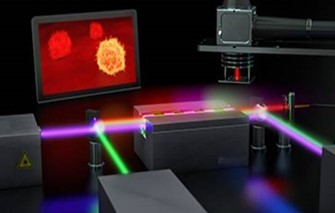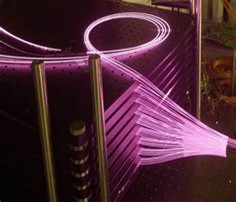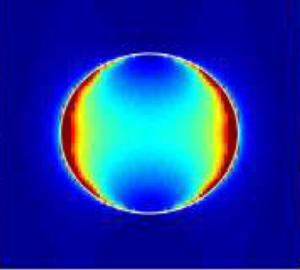Quantum and ghost imaging
Imagerie quantique :
L’objectif est de développer une nouvelle technique d’imagerie par action à distance en utilisant les corrélations entre deux photons harmoniques intriqués issus d’une même source laser fibrée. Nous étudierons en particulier la possibilité de transférer instantanément, en espace libre une information spatiale d’un point ‘objet’ vers un point ‘image’, soit en régime de champ lointain (Far Field Quantum Imaging), soit en régime de champ proche (Quantum Diffractive Imaging).


Fig. 3: La source harmonique intriquée peut être utilisée en schéma interférométrique (gauche) ou bien en régime diffractive (droite).
Imagerie par photons X corrélés (GHOST Imaging)
Le projet NANOX SCAN est un projet européen pour le développement d’un microscope à rayon X corrélés (GHOST Imaging), avec pour objectif d’imager pour la première fois des virus et des structures virales. Le travail se concentre particulièrement autour de la génération de rayons X. Ces derniers seront générés en focalisant un laser femto-seconde sur un jet de nanoparticules métalliques ou un jet liquide de gaz rare (Ar, Kr). Les études de corrélation voire d’intrication des photons X seront appliquées à des techniques d’imagerie biologiques avec des résolutions extrêmes atteignant la limite d’Heisenberg.
Projet NANOX SCAN Site web: https://nanoxcan.eu/


Fig. 4: Le laser XCAN est utilisé pou généré les rayons X corrélés (left). Augmentation locale du champ électrique d’une nanoparticule irradiée par le laser XCAN.
Réf :
“Experimental evidences of quantum properties in a high-harmonic-based bipartite system”
D. Theidel et al. Advances in Ultrafast Condensed Phase Physics IV 12992, 54-56 (2024)
Evidence of the quantum-optical nature of high-harmonic generation
D. Theidel et al., arXiv preprint arXiv:2405.15022 (2024) Phys. Rev. X Quantum
“High harmonic generation in solids driven by a high energy fiber laser source”
D. Boukhaoui et al. Advances in Ultrafast Condensed Phase Physics IV 12992, 29-33 (2024)
“Spatial transformations of high-order harmonic generation in transition metal dichalcogenides”
L. Schlemmer, et al., Advances in Ultrafast Condensed Phase Physics IV 12992, 34-36 (2024)
“OAM Driven Nucleation of Sub‐50 nm Compact Antiferromagnetic Skyrmions”
S. Mallick et al., Advanced Functional Materials, 2409528 (2024)
X-ray generation by fs-laser processing of biological material
P. Mosel, et al., Biomedical optics express 14 (11), 5656-5669 (2023)
High-energy solitonic source of high harmonics
Y. Leventoux et l., Fiber Lasers XX: Technology and Systems 12400, 1240017 (2023)
Evidence of coherence in strong-field electron photoemission from a semiconductor
M. Froidevaux, et al., arXiv preprint arXiv:2301.02115 (2023)
High-Energy Solitonic Source of High Harmonics
M. Jedidi, et al., Advanced Solid State Lasers, ATu4A. 8 (2022)
Polarization spectroscopy of high-order harmonic generation in gallium arsenide
S. Kaassamani et al., Optics Express 30 (22), 40531-40539 (2022)
Self-probed ptychography from semiconductor high-harmonic generation
S. Fröhlich et al., Optics Letters 47 (19), 4865-4868
Complete band structure of microscopic MoS2 and WSe2 flakes
S Babenkov et al., APS March Meeting Abstracts 2022, F55. 012


